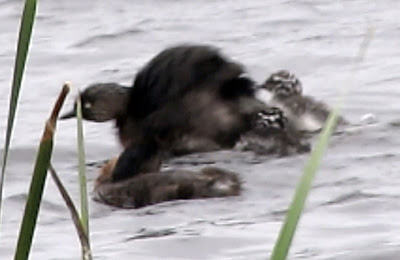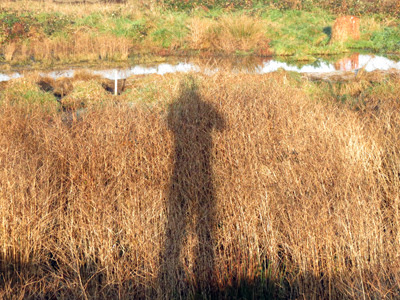Welcome to the Midnight Collective Broadsheet 97
Actively
supporting NZ’s endangered wetland birds
 |
| The great Czech writer |
This post is dedicated
to Franz Kafka, who got it about
right
The
story so far: we had been collecting evidence of pollution generated from the
construction of an expressway through our local swamp when we discovered the
NZTA, which managed the consortium building the expressway, had gone to great
lengths to pump blackened dune lake water, into the wharemauku, bypassing its own pollution
monitors. So we took the issue to the local environmental watchdog the Greater
Wellington Regional Council (GWRC). Here’s what happened next.
 |
| Red Zoned - the Raumati Beach dune lake |
In
dealing with any large organisation you need to keep in mind that everyone has
received extensive training in the universal C.A.R.E Policy; ie. Cover A*** Retain Employment. To countermand this it is best to start at the top and work
your way down. And, where possible, drop a big name into the conversation. We had
previously approached the Parliamentary Commissioner for the Environment (a fruitless foray but they weren't to know that);
so we dropped her into the mix, which elicited an immediate response from the
GWRC who floated the enquiry down into the inner reaches of their middle management.
 |
| Munted Monitor |
We
broached three issues – the dilapidated state of the NZTA’s pollution monitors;
the polluting of the lower reaches of the wharemauku and then the appearance of
a red pollutant in the waterway following the dumping of quarried scoria onto
the expressway.
Pollutant from Drain 7
They
were courteous and formal, if somewhat patronising, advising that an
investigation was being launched and giving a time line; but then also conceding
that they had a relationship with
the NZTA to speed up consent processing etc. This set alarm bells ringing
because, crucially, they also revealed the NZTA did not have a consent for
pumping water into Drain 7. Our anxiety intensified however, when their liaison
turned out to be one lower order foot soldier inspecting goings on once a week,
with the upper echelons of GWRC management taking the NZTA’s word, for whatever
issue was put in front of them.
The
GWRC it turned out, had no idea the NZTA had been pumping blackened dune lake
water into the wharemauku, but they made a confident assessment nevertheless
that might be briefly summarised as
1 The red pollutant was ‘natural’.
2 The pollution monitors had been out of
action, but not recently. (We had foto’s disproving this). They would keep an
eye on them from now on. (They haven’t)
3 The Board of Inquiry gave
the NZTA a licence to do pretty much what they liked. (This was true)
It
was then that we put in our supplementary question that asked if they were
happy that the NZTA had been pumping black water into the wharemauku below the
pollution monitors. We had foto’s so they did a double take and went back to
their drawing boards: then got back with a detailed response on the black
water issue which we publish in full…
Discharge of black water into
Drain 7
We are aware that M2PP has been
pumping water into Drain 7 which then flows into the Wharemauku below the NTU
loggers. This discharge is occurring under a “Permit to Pump”, which is
an M2PP measure authorised under management plans and consent conditions for
the Project. This Permit to Pump requires M2PP to use handheld NTU
monitors upstream and downstream of the discharge to manage the effect of the
discharge within certain limits. Therefore, while it may appear that
the discharge is bypassing the monitoring requirements for the Project by
discharging downstream of the NTU logger, it is in fact being monitored under a
separate system. We are currently following this up with M2PP to ensure
that the relevant permit is being complied with.
Actually,
they weren’t aware of the pumping, and if they’ve been following anything up at all, we haven’t
been advised of the result; though what they did reveal was that the NZTA, armed
with something called a ‘permit to pump’ and a compliantly sleepy GWRC, could
do pretty much anything they wanted. At which point we threw up our hands.
Well,
almost, because lets state the unresolved issues clearly.
-We
still haven’t got an answer as to why the NZTA would go to all the trouble and
expense of draining water out through a hidden drain, when they could have pumped
it straight into the wharemauku.
-This
pumping would have occurred over three or four days and we frequent this area
regularly. We picked up signs of the resulting pollution in Drain 7 and traced
it back from there, but there was no sign of NZTA staff standing anywhere near
this waterway, or the wharemauku itself, measuring pollution levels.
-This they would have had to do 24 hours of the day going by the experience
revealed in our last post, where we found NZTA pumps left going through a weekend,
and around the clock, with no staff in attendance.
The
evidence remains circumstantial so we’ll leave you to make up your own mind. Though
we now have the even more serious issue of a permanent pollutant, invading the
wharemauku from Drain 7 to preoccupy us.
Conclusion
There’s
a lesson here in what happens when laws are arbitrarily jiggered, corners cut, scientific
findings massaged to suit, while
everyone is ‘inside the tent’ scratching each others back… because now we find
that the wharemauku isn’t the only waterway that is starting to turn black.
Here is a foto of Andrews Pond, about a kilometre to the north. It is listed as
highly significant by the Kapiti Council, is a favoured haunt of protected scaup
and their young, and sits right across the road from the expressway. And no,
GWRC, this is not its natural colour.
 |
| Andrews Pond 26 October 2015 |
You
won’t find this story in your local New Zealand media and its been a long haul working
through it; but it has generated considerable interest so it’s a pleasure to
see that not all Kiwis (not to mention our international friends), have fallen
asleep at our environment wheel.
Track
we were listening to while posting this Sonny Day's '84 classic of Springston's classic Saving Up
You better start savin' up
For the things that money can't buy
































